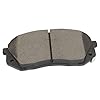Table of Contents
No matter how new your car is, the battery will need to be replaced at some point. It might be really intimidating when you first start out. Battery sparking during connection is one problem you’ll have to cope with. And certainly, panicking is quite understandable under those circumstances. But, how to avoid sparks when connecting battery?
All you need is a little knowledge about the right techniques to avoid car battery sparks. In this article, we will find out the reasons behind battery sparks when connecting, If it is normal or not, how you can avoid battery sparking when installing, and much more. Let’s begin:
How to Fix a Bad Cylinder in 3 Easy Ways
What Causes A Spark?
When two electrical circuits touch, a spark is created called an arc. The arc acts as a barrier between the positive terminal and negative terminals, providing resistance to the circuit. This happens when the potential energy at the two points of contact is different.
When there is something in the car that requires energy before the battery is attached, more potential differences are created. Hence leading to a battery sparking when installed.
In Simple Words:
While connecting the car’s battery, sparks may be visible if your vehicle has several electrical components. This is because the capacitors of the electrical components were discharged when the battery was removed. Reconnecting the battery will cause a spark since the capacitors will immediately begin drawing electricity to be recharged.
Note: As there is no full circuit for the current to travel through, a car battery will not spark if only one terminal is attached. When you connect the second terminal (it doesn’t matter which one), you create a path for electric current, which draw power, resulting in car battery sparks.
How To Protect Car From Sun In Open Parking – 17 Best Ways
Take Caution If You Notice Large Sparks:
Whenever time a battery produces a big spark, it means something is wrong. Similarly, if you notice the connections melting, it’s best to have a professional come take a look as soon as possible. Turn off the engine and take the battery out, then call a mechanic.
Why Take Caution?
The high voltage contained in batteries makes it imperative that you exercise extreme caution when working with them. You risk serious harm if you make even one mistake.
Batteries contain highly combustible chemicals that can easily catch fire due to high temperatures and a small spark. Hence, it is wise to be cautious while working around the battery.
It’s vital to remember that if you touch the bare metal of the cables, the electricity will flow through it. It’s possible that this will cause you to experience an electric shock.
Should a Car Battery Spark When Connecting It?
The sound of a car battery igniting when it’s connected is comforting. It’s almost as though the car is getting ready to hit the road. But should a car battery spark when connecting it?
It all comes down to how many gadgets need the electrical power to have to be wired in before the battery is hooked up. Assume you have activated your indicators. If you attach a battery, the indicators will light up with a spark as soon as they get electricity (you may not be able to do it).
Similarly, the more electrical components you have read, the greater the spark will be.
How To Avoid Sparks When Connecting Battery?
Before we proceed with how to avoid sparks when connecting battery, you must clean the battery properly. It’s crucial for both your safety and the health of your battery that you observe these guidelines. Wipe down the battery terminals and cables with a clean cloth.
Once cleaned now you can proceed to connect the battery terminals:
Step-1) PlaceThe Battery Properly:
First, double-check that the battery is installed in the correct spot. Once the battery is in its proper spot, the positive terminal cable may be found.
Step-2) Connect and Tighten the Connection:
Find the “+” marked positive terminal and plug in the corresponding cable. Just a little press will make sure the cable is securely fastened to the plug. When the connection lies flat against the terminal, you know it’s properly attached.
The next step is to safeguard the link. Pull the cable taught by turning the bolt anti-clockwise with a wrench. In order to prevent a short circuit when connecting the battery, this must be done.
Step-3) Connect the Negative Terminal:
Now comes the exciting part of the process. When the negative battery cable is connected, a spark will occur here. Take special caution here because a car battery can easily arc if you aren’t careful.
Remember that the positive end of the cable should not have any metal that could affect the negative cable.
Now, just like you did with the positive cable, you need to plug in the negative one. With a wrench, snug the cable up after pressing it into place. Unlike the connection between a car battery and spark plugs, this one doesn’t explode.
Avoid any potential disaster by paying close attention to each and every step.
Things to Know:
Negative battery terminal sparks when connecting are perfectly normal to happen as we have already discussed earlier in this post. But these car battery sparks are not always normal. You must know a few things to differentiate when you should take a step to stay safe.
When There Shouldn’t Be Any Spark:
There shouldn’t be any battery sparking until the other terminal is attached. Something is incorrect if you see a spark while only one battery terminal is connected. Take precautions by removing the battery and calling a repairman.
Smoke:
Smoke indicates that the positive and negative terminals have been linked, which can result in an electrical fire. Always use proper insulation between the positive terminal and the negative terminal to prevent this from happening.
Whenever you smell smoke, know that something is wrong and need to start over. If the problem persists, you should see a doctor right soon; a catastrophe is imminent.
Large Spark:
The presence of significant sparks indicates the presence of an issue. The possibility of a small spark is to be expected if your battery dies suddenly, but a major one is a big no.
The best thing to do is reconnect the battery connectors once you’ve removed them. Verify if the problem has been fixed. If the problem persists, you should seek expert assistance.
Minimize the Negative Terminal Sparking:
Car battery sparks when connecting are observed when there are electrical components ready to receive charge before the battery is connected. If there are more of these elements, the resulting spark will be more intense. Nonetheless, it is typical to see short sparks coming from a car battery.
Turn off all the lights, radio, indicators, and any other electrical features before connecting the battery.
Many of the electrical systems in today’s automobiles are designed to operate in the background and will not stop working if the battery is disconnected. Remember that sparks are perfectly normal while connecting the negative cable, especially in modern cars.
The Proper Way to Connect Battery Terminals:
Putting the terminals of two batteries together completes an electrical circuit. Connecting devices to this circuit will supply them with electricity from the battery. As a result, making sure the new battery terminals are properly connected is crucial for avoiding disaster.
The terminals can be connected in either order; it doesn’t matter which way you start. However, the positive cable should be connected first, then the negative cable.
Note: Never try to connect both terminals together. This will create car battery arcing and lead to a huge spark. This may result in severe injuries or a fatal situation.
General Misconception:
While handling a battery, many people assume that the positive cable must be connected first and detached last if they don’t want to start a fire. That’s not how it works at all.
The spark is always caused by the difference in potential between the two sites. It makes no difference which terminals are connected or unplugged first.
You Can Try:
Using an insulated wrench to disconnect and connect the battery terminals is always the best option. The insulated handle will prevent the creation of a connection between the terminals.
Frequently Asked Questions:
Q: What Causes Negative Battery Cable Sparks When Connecting?
Ans: Because electrical components are prepared to accept charge before the negative cable is attached, a potential difference will exist between the terminals after the positive cable is connected.
Hence, you’ll have to worry about the negative terminal sparking as soon as you connect the negative terminal. It’s safe to assume that the spark will be more impressive the greater the disparity.
Q: What Happens Due to a Car Battery Sparking?
Ans: Short-term benefits may outweigh the long-term costs of sparks from a car battery. Yet, there is an even larger risk. Putting a spark into a car battery is exceedingly dangerous since it contains gases that could explode if the battery cables present were to be ignited. The possibility of an explosion and subsequent fire exists.
Q: Can a Dead Battery Spark?
Ans: In theory, just a dead battery cable may still cause a spark, but in practice, this rarely happens. Dead battery cables have no potential difference since the cells are not linked. Jump-starting dead battery cables might cause a little spark if the cables come into contact.
Q: Which Battery Terminal Should Be Connected First To Avoid Battery Sparking When Installing?
Ans: This is a point that has been made numerous times throughout this article. If one battery terminal is attached first, the other will work just well. The potential difference between the two places is always what causes the spark.
The positive terminals should be connected first, followed by the negative terminal. Likewise, while removing the battery terminals, start with the negative terminal.
Q: What Happens If I Connect a Positive Wire To a Negative Wire?
Ans: Connecting the positive and negative terminals of car batteries with a single wire creates a low-resistance circuit. It is possible to draw power by decreasing the resistance. A short circuit is the result of such an occurrence.
Q: Should a Car Battery Spark When Connecting It?
Ans: Car battery sparking is a perfectly normal phenomenon people observe when the battery is connected. This is because your battery is already charged and ready to go when it receives excess electrical energy. As a result, the electrical power/ high voltage begins to flow at a rapid pace leading to a battery little spark.
Conclusion:
In conclusion, always be aware of the sparks that can occur when connecting a battery, and take precautions to avoid them. Be sure to use caution when handling any type of battery mentioned in the blog. Avoid sparks entirely by disconnecting everything before connecting a battery.
By following these simple tips, you can safely connect your car batteries and avoid any potential sparks and risks associated.








































![EzyShade 10-Layer Car Cover Waterproof All Weather [See Vehicle Size Chart for Accurate Fit] Outdoor Full Exterior Covers for Automobiles Sedan Hatch. Rain Sun Snow. Black, Size A0 (See SizeChart) #1](https://m.media-amazon.com/images/I/41jJl0h+3tL._SL100_.jpg)
![EzyShade 10-Layer Car Cover Waterproof All Weather [See Vehicle Size Chart for Accurate Fit] Outdoor Full Exterior Covers for Automobiles Sedan Hatch. Rain Sun Snow. Black, Size A0 (See SizeChart) #2](https://m.media-amazon.com/images/I/515IPM6p4EL._SL100_.jpg)
![EzyShade 10-Layer Car Cover Waterproof All Weather [See Vehicle Size Chart for Accurate Fit] Outdoor Full Exterior Covers for Automobiles Sedan Hatch. Rain Sun Snow. Black, Size A0 (See SizeChart) #3](https://m.media-amazon.com/images/I/616zCojgkWL._SL100_.jpg)
![EzyShade 10-Layer Car Cover Waterproof All Weather [See Vehicle Size Chart for Accurate Fit] Outdoor Full Exterior Covers for Automobiles Sedan Hatch. Rain Sun Snow. Black, Size A0 (See SizeChart) #4](https://m.media-amazon.com/images/I/61wgWnKUMyL._SL100_.jpg)
![EzyShade 10-Layer Car Cover Waterproof All Weather [See Vehicle Size Chart for Accurate Fit] Outdoor Full Exterior Covers for Automobiles Sedan Hatch. Rain Sun Snow. Black, Size A0 (See SizeChart) #5](https://m.media-amazon.com/images/I/616W8kRAHkL._SL100_.jpg)




